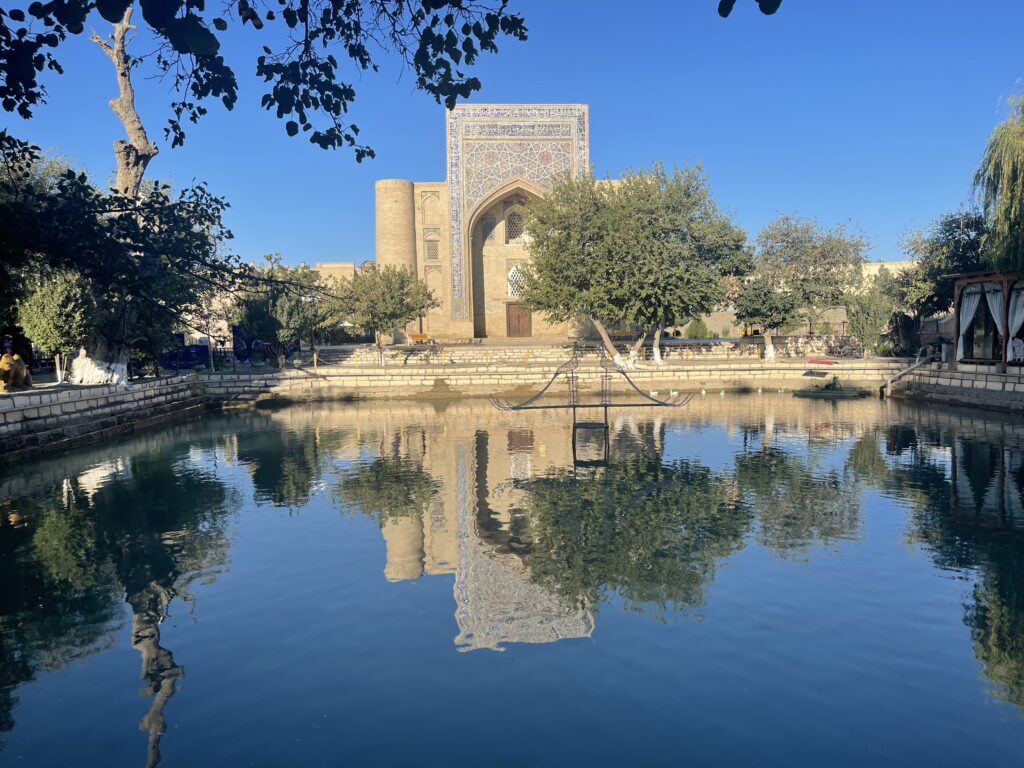Bukhara, a city over 2,000 years old, has countless treasures waiting to be explored by curious travelers. One of its most intriguing beauties is the Lyabi-Hauz Ensemble, a picturesque complex of historical buildings whose centerpiece is a charming square body of water which draws in the crowds to sit, eat, and relax.
The Lyabi-Hauz Ensemble, which translates to “By the pond” in Uzbek, is an iconic historic square that sits at the core of ancient Bukhara.
This significant location offers insight into Bukhara’s extensive history and showcases its enduring architectural charm.
A Brief Introduction
The Lyabi-Hauz Ensemble, which translates to “By the pond” in Uzbek, is an iconic historic square that sits at the core of ancient Bukhara. This enchanting spot is much more than just a square; it’s a window into Bukhara’s rich past and a testament to the enduring beauty of its architecture.
A Glimpse into History
To truly appreciate the Lyabi-Hauz Ensemble, it’s essential to delve into its history. Once a bustling trading post along the Silk Road, this square bore witness to the exchange of goods, cultures, and ideas. The presence of a nearby shopping street hints at its commercial significance in centuries gone by.
The ensemble itself is an amalgamation of stunning historical buildings. Let’s explore some of these architectural marvels that grace the Lyabi-Hauz square:
1. Nadir Divan Begi Madrassah
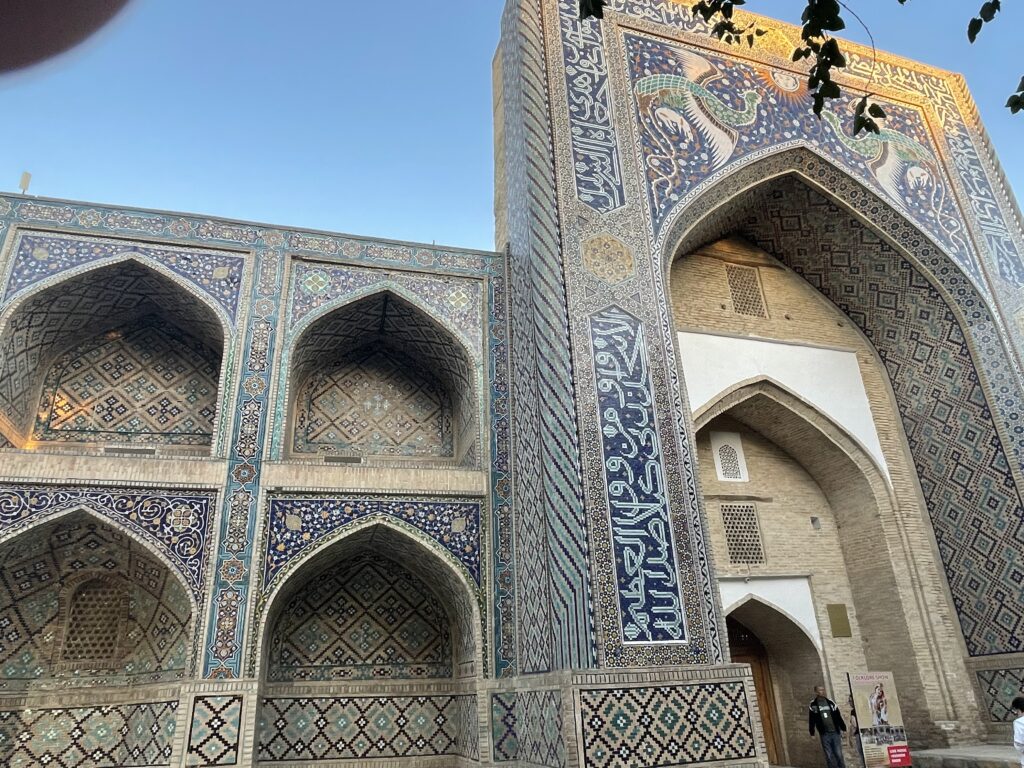
The Nadir Divan Begi Madrassah, the first building to grace the ensemble, was initially designed to house a Khanaka (Sufi abode), a swimming pool, and a Caravanserai. Over time, it transformed into a fully-fledged madrassah.
As you approach this structure, you’ll be greeted by its intricate and brightly decorated facade. The portal, adorned with blue mosaics and Arabic inscriptions, exudes an air of grandeur. It’s a testament to the architectural prowess of its time.
2. Kukeldash Madrassah

Kukeldash Madrassah, the second building in the ensemble, is a masterpiece from the 16th century. This magnificent structure stands tall as one of the largest madrassahs in Bukhara. With its 160 hujras (prayer rooms), it once accommodated hundreds of students.
Today, the madrassah no longer serves as an educational institution but instead hosts dinners and folklore shows for curious tourists.
As you explore its architecture, you’ll be captivated by the majolica decorations that grace its facades. The central entrance, featuring stunning blue mosaics and Arabic inscriptions, welcomes you with open arms.
3. Nadir Divan Begi Khanaka
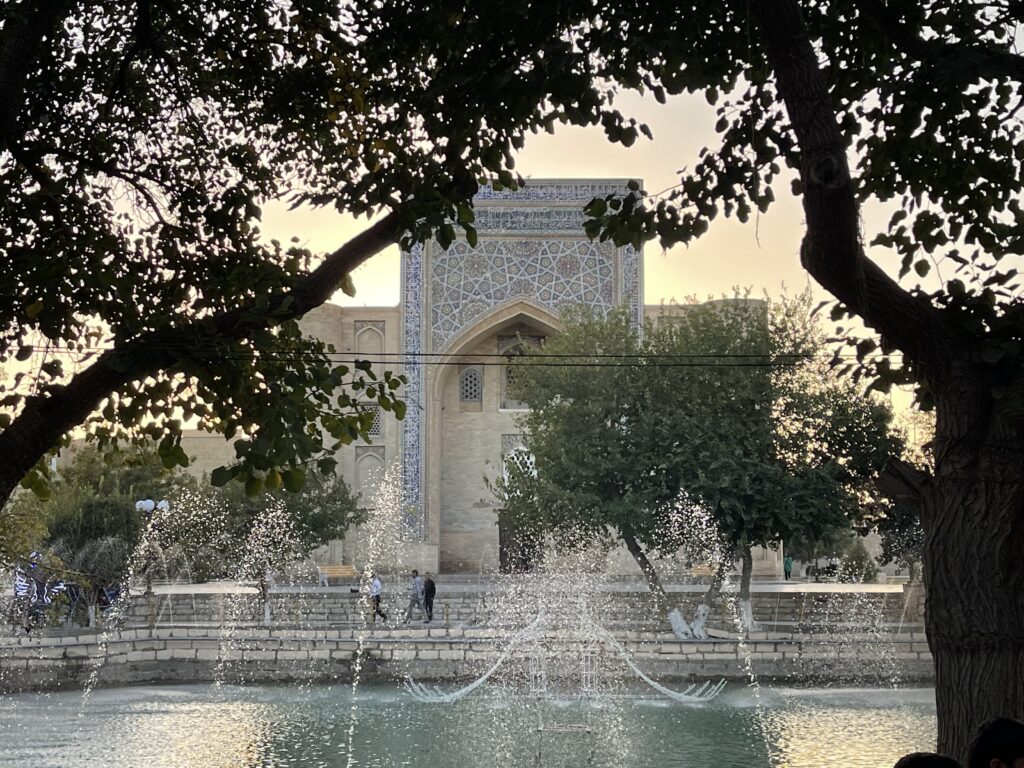
Adjacent to the Lyabi-Hauz pond, you’ll find Khanaka Nadir Divan Begi, built in the early 17th century. This structure served as a lodge for Sufi Muslims and adds an element of monumentality to the ensemble.
Its facade, adorned with vibrant and intricate mosaics, carries an unmistakable Oriental charm. The building features numerous hujras on two floors, all facing a central hall crowned with a high domed roof.
A Cultural Hub
Lyabi-Hauz is not merely a collection of historical buildings; it’s a thriving cultural hub where the past and present harmoniously coexist. The square regularly hosts concerts, fashion shows featuring traditional Uzbek dresses, and other vibrant events that attract both locals and tourists.
In the evening, the square comes to life with the glow of lights, as people fill the streets and benches around the pond. Finding an empty table in the bustling summer cafes can be a delightful challenge.
The Legend of Lyabi-Hauz
As with many historical places, Lyabi-Hauz has its own captivating legend. The tale revolves around a determined vizier named Nadir Divan-Beghi.
Legend has it that he had his eye on a piece of land owned by a Jewish widow, who refused to sell. Undeterred, Nadir Divan-Beghi built a canal beside her house, slowly undermining one of its walls.
The widow, left with no choice, finally agreed to the sale. In exchange for the land, she asked for permission to build a synagogue nearby. Nadir Divan-Beghi accepted the proposal, and thus, the iconic Lyabi-Hauz pond was born. In some historical sources, the pond had the unofficial name “Hauz-i Bazur,” which roughly translates to “built through compulsion.”
Lyabi-Hauz Today
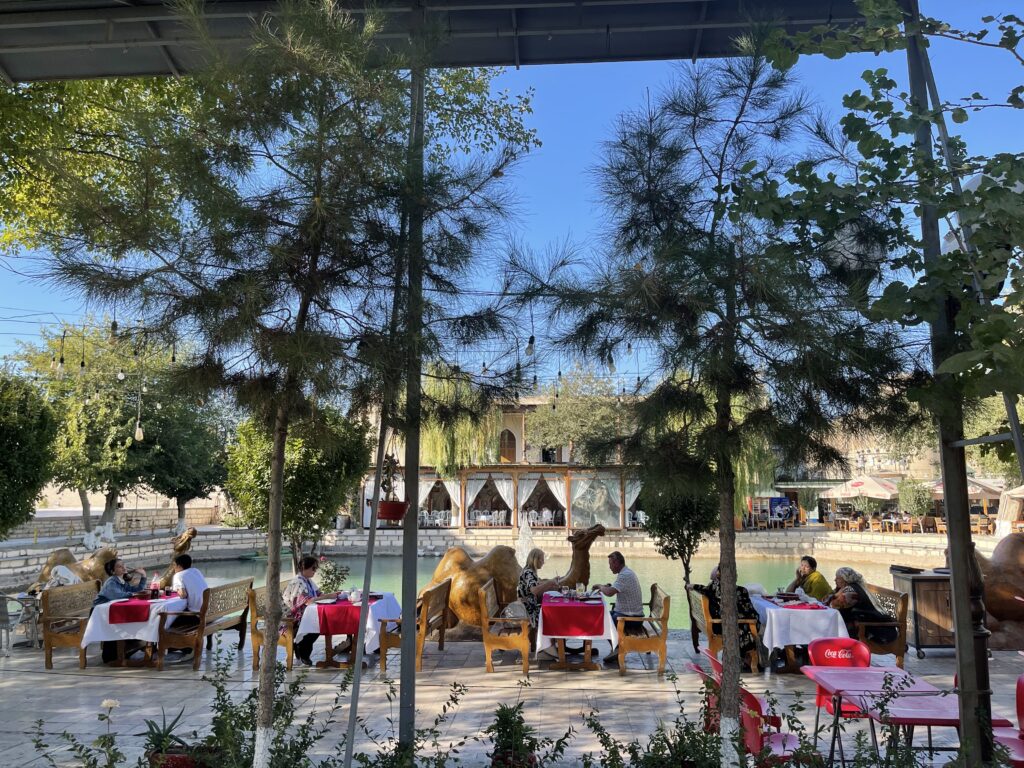
Despite the changing times and modernization, Lyabi-Hauz remains a tranquil oasis where visitors can bask in the shade of mulberry trees, just as residents did centuries ago.
The pond, with its dimensions of 36 by 42 meters and a depth of up to 5 meters, offers respite from the scorching Bukhara sun. It stands as a living testament to the enduring appeal of a place that once provided the city’s main water source.
Exploring the Surroundings
The Lyabi-Hauz Ensemble is not an isolated attraction; it’s surrounded by a myriad of historical sites and attractions. Just a stone’s throw away, you’ll find the Toki-Sarrafon trading dome and the Magoki-Attori mosque, both adding to the tapestry of Bukhara’s rich history.
As a busy tourist spot, the square also boasts Bukhara’s most vibrant restaurant scene that truly comes alive in the evening.
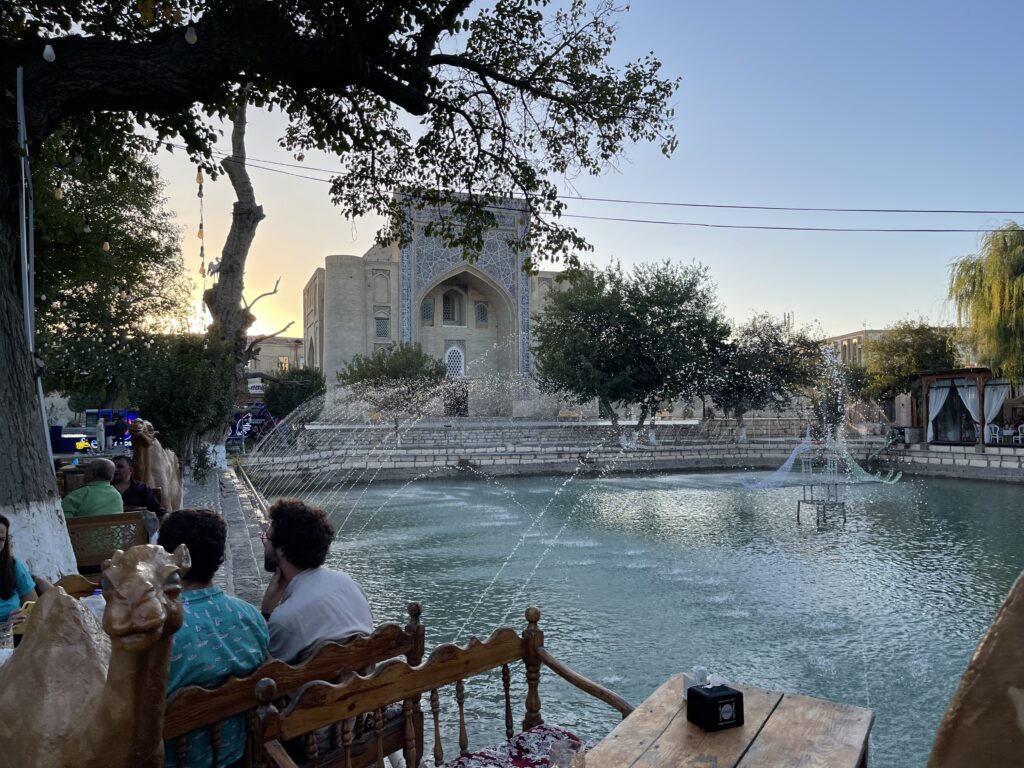
A visit to the Lyabi-Hauz Ensemble in Bukhara is like taking a step back in time. It’s a place where history, culture, and architecture come together in perfect harmony.
As you wander through the square, explore the majestic buildings, and sip tea in the charming cafes, you’ll be enchanted by the timeless charm of Lyabi-Hauz. So, when you find yourself in Bukhara, be sure to make a stop at this remarkable ensemble and let its stories and beauty transport you to another era.
If you’re planning a trip to Bukhara read our guide on the best areas to stay in the city.
